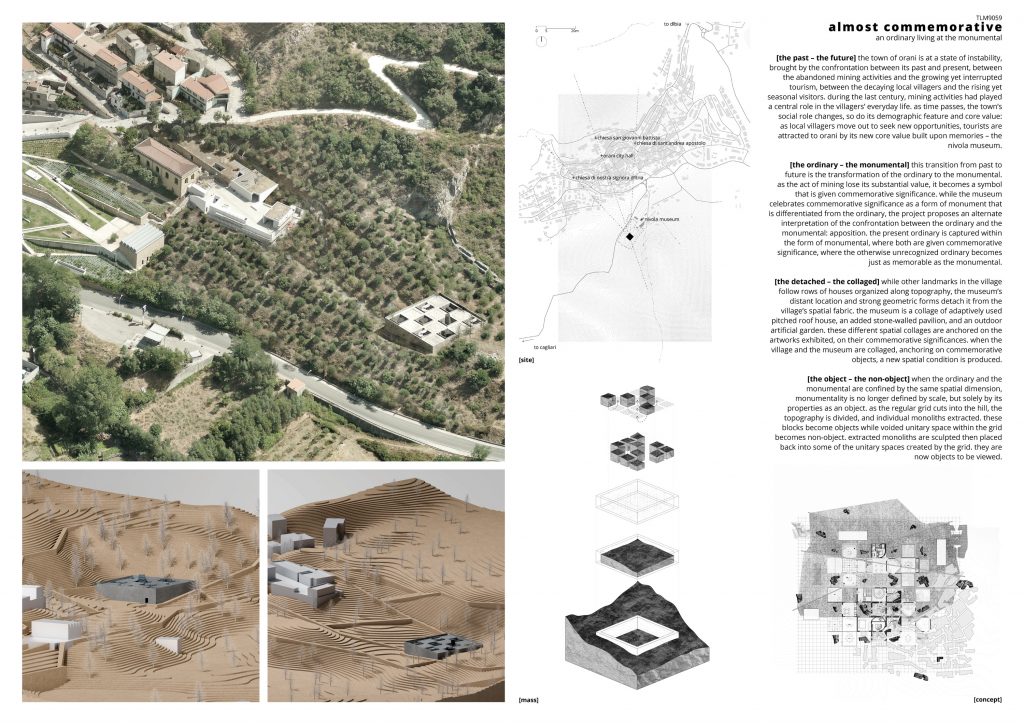
[the monumental – the ordinary] the new spatial condition is the transformation of the ordinary to the monumental. as the act of mining lose its substantial value, it becomes a symbol. while the museum celebrates commemorative signi-flcance as a form of monument that is differentiated from the ordinary, the project proposes an alternate interpretation of the confrontation between the ordinary and the monumental: apposition. the present ordinary is captured within the form of monumental, where both are given commemorative signi-flcance, where the otherwise unrecognized ordinary becomes just as memorable as the monumental.
[the object – the non-object] when the ordinary and the monumental are con-flned by the same spatial dimension, monumentality is no longer de-flned by scale, but solely by its properties as an object. as the regular grid cuts into the hill, individual monoliths extracted. these monoliths become objects while voided unitary space within the grid becomes non-object.
[the appreciated – the experienced] the grid that cuts into terrain creates two realms. it de-flnes, within itself, identically dimensioned space created from excavation – the experienced realm. here, spaces are experienced in the form of ordinary wander and encounters. spiral stairs in some of the courtyards connect the experienced realm to the upper platform – the appreciated realm. here the monoliths are monuments, protected, controlled, to be viewed at distance. It is a living museum where sculpted monoliths anchor the two realms: the ordinary “living” experienced in space within the grid coupled with the monumental “museum” above where objects are appreciated.
